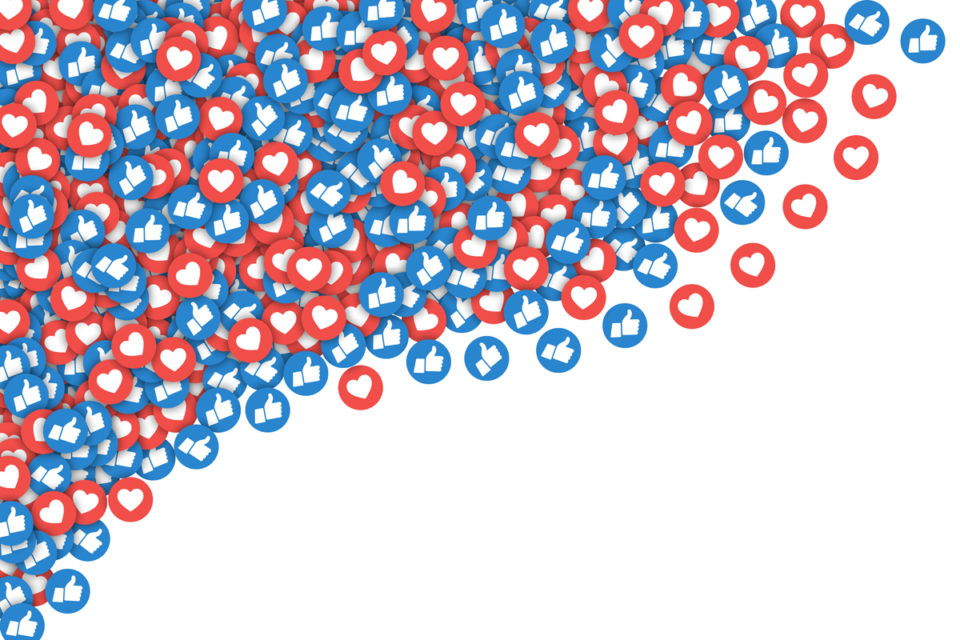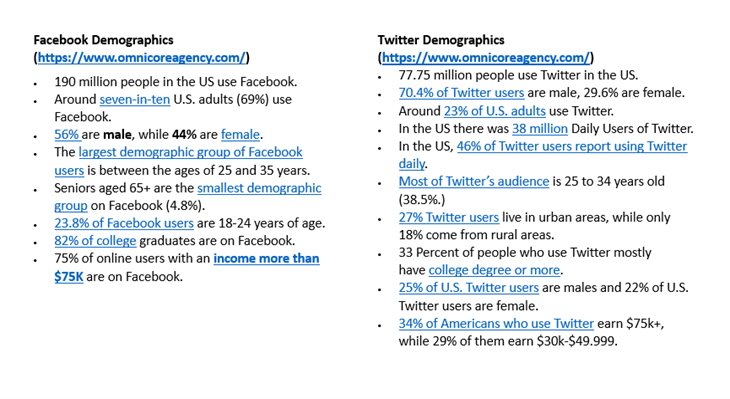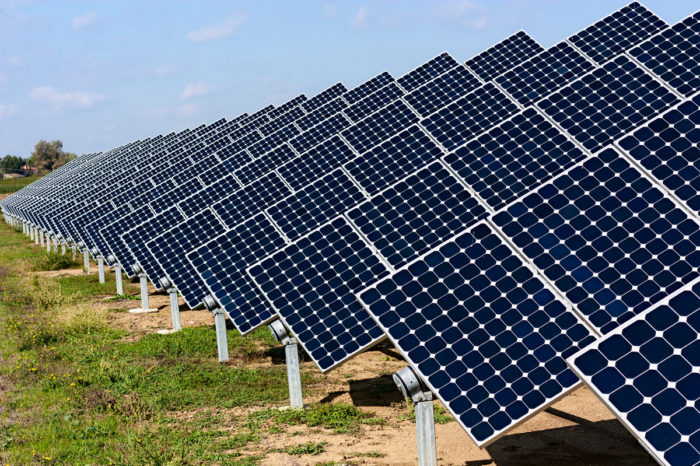Building and Maintaining a Targeted Social Media Presence is Key for the Nation’s Energy Sector

By T. L. Headley, MBA, The Headley Company
In 2008, the West Virginia Coal Association (WVCA) conducted a poll measuring the public’s perception of the state’s coal industry. The results were alarming. Less than 40 percent of the people of West Virginia held a positive view of the industry and their trust in the industry was even lower. That same poll was conducted again in 2014 and it found that public attitudes had changed dramatically. At that time, support for the industry had risen to an unbelievable 80 percent (yes, you read that right – 80 percent) and trust was almost as high.
How did the public’s perception of the coal industry change so dramatically in such a short time?
This article explores the strategies the WVCA used to turn around its public support and provides insight into why the industry as a whole must continue to build and expand its social media footprint to meet the challenges of today and tomorrow.
Case Study: Friends of Coal
The Association already had a strong outreach effort in place with its Friends of Coal organization. The effort included heavy radio advertising, traditional newspaper advertising, billboards along major roadways and sports sponsorships (including the state’s high school championships across all sports, and sponsorship of both of the state’s principal universities). Despite this, support for the industry in the state was slowly and consistently falling.
While it was concerning in 2008, the Obama-era war on coal had not ramped up and production was still at historically high levels. That began to change quickly when the Obama war on coal began to truly impact the industry. Production quickly began to slide, tens of thousands of jobs were lost, companies faced bankruptcy and communities that depended on coal production faced extinction. The companies realized they had to gain public support as they fought back.
Building and expanding their social media outreach efforts offered a new cost-effective channel to reach people who otherwise knew nothing about the coal industry. Again, the already existing Friends of Coal offered a ready-made vehicle around which to build the outreach effort.
In 2009, the Association launched a Friends of Coal Facebook page. Facebook was then beginning to be the primary social media channel for families and younger adults. Using a combination of informational, educational and editorial posts, with a liberal sprinkling of humor, the FOC social media positioned itself as a voice of the nation’s “coal mining families.”
By the election cycle of 2012, the WVCA had expanded its Friends of Coal footprint to include a primary page for Twitter and another for LinkedIn. Interest in the organization had begun to spread around the country, with Kentucky starting an independent Friends of Coal page and with the WVCA/FOC expanding to include pages for several other states with major coal production, transport or use. The network’s total footprint had grown to approximately 100,000 followers and more than four million impressions each year. By 2016, the footprint had expanded even further, to more than 200,000. More importantly, the network racked up more than 120 million impressions (eyes on the page) between 2009 and 2016, for an average of about 18 million impressions per year. The results were easy to see in the shift in support for the coal industry in West Virginia. It was also clearly evidenced in the massive shift of the state’s voting patterns toward coal-supporting candidates.
Between 2016 and 2022, the Friends of Coal footprint continued to grow, adding another 50,000 followers and generating another 72 million impressions. It is important to note that these numbers do not include the growth of Friends of Coal-West, which is independently operated. It has about 22,000 followers and maintains a strong presence for western coal.
Social Media 101: Why Do We Need It and How Do We Use It?
More than 190 million people use Facebook, and more than 78 million use Twitter in the United States today. LinkedIn has 185 million users and YouTube reports more than 200 million use its video service. It’s safe to say that you probably have a Facebook, Twitter and LinkedIn profile, and you watch videos on YouTube. Clearly, social media provides an opportunity to reach a broad audience, but it goes far beyond that. Social media can reach that audience, which then shares your messages. That, in turn, influences and persuades others to support your cause and to take action to help you when needed. How do you start?
The first step is knowing yourself. What do you have to say? What are your strengths and weaknesses? Where are you exposed to hazard? Where do you see opportunities? Yes, that’s right, the good old SWOT analysis everyone learned about in business school. The bottom line is you have to know yourself before you can do much of anything else.
Next, and equally important, you have to know your audience(s). Who are you trying to reach? What is important to them and how do you fit into helping them achieve it? Where are they? How do you most effectively reach them?
Every company or organization has multiple audiences, each with different personalities, demographics, perspectives, issues, concerns and desires. Each of these audiences must be looked at separately with messaging designed specifically for them and provided on channels they use. That is the key. In addition, the social media landscape has fragmented and each channel has steadily developed its own user profile. For example, Facebook has steadily moved to an older, middle-class, family-friendly profile with a moderate political orientation. Twitter has developed a more urban, 20-something to 30-something profile with a liberal political orientation. LinkedIn has steadily developed into a business-oriented, marketing-friendly channel. TikTok is oriented toward a younger, slightly skewed female audience. YouTube has a broad audience, relatively evenly divided between male and female, with 82 percent of the U.S. adult population using the channel, including 95 percent of 18-29 year-olds, 91 percent of 30-49 year-olds and 49 percent of 65+ year-olds.
As you can see, each channel has its own demographic footprint. Given that, an organization should determine which audience demographic segments it is trying to reach, and program its message to the channels that best reach that group.
It is important to understand that the user profiles of these channels are not static but shift over time as groups “find” or “adopt” new channels and move on from older ones. For example, Facebook was at one time a major channel for young people, but they have moved on, first to Twitter and now to Tik-Tok. Facebook now has an older, wealthier user profile. Until recently, Twitter was used heavily by conservatives, but the company made changes and began to effectively censor speech and many conservatives have moved to former president Donald Trump’s Truth Social or Gab or MeWe. Your communications staff must continually keep up with these trends and reshape your outreach and messaging profile to reflect them.
Following are the key demographic profiles for each of the major social media platforms.

Reviewing these demographics should provide decision-makers with the information they need to develop messaging tailored to their issues and the groups they want to reach.
Of course, there are other social media platforms, but these are the principal ones in the United States. Others include Reddit, TikTok and Snapchat. It is important to note that TikTok is effectively run by the Chinese government and there is some concern that it includes spyware that can steal passwords, data and even act as trojans (malware) in computer systems.
Summary
As you can see, developing and maintaining a strong social media presence is vital to the effort to protect the nation’s coal industry from the political
and social assaults against it. Social media provides a cost-effective means to reach the broad public (or very specific groups) with the industry message. The example of the effective use of social media by the West Virginia Coal Association and its Friends of Coal platform provides the industry with the blueprint to follow.
One last point must be made, however. While it is good to use advertising to ramp up the number of followers in the early stages, it is the followers who engage with the platform out of true interest who are the most valuable. They will step up and lead others into action. Paid followers are simply numbers on the page. So, once the industry gains enough followers through the use of paid “buckets of likes” it is important to shift any ad buys to specific messaging and issues. Let the issues and message themselves draw the followers.
The takeaway is that a strong, focused social media platform MUST be the centerpiece of any effort to defend the industry going forward.
Upcoming: Part II: Comparing Cost of Advertising
About the Author
T.L. Headley is a former communications director for the American Coal Council and the West Virginia Coal Association. He is the president of Headley & Company Communications & Research in Ona, WV. He has more than 30 years of experience in mass communications and holds an MBA in economics and an MA in mass communications/public relations.








